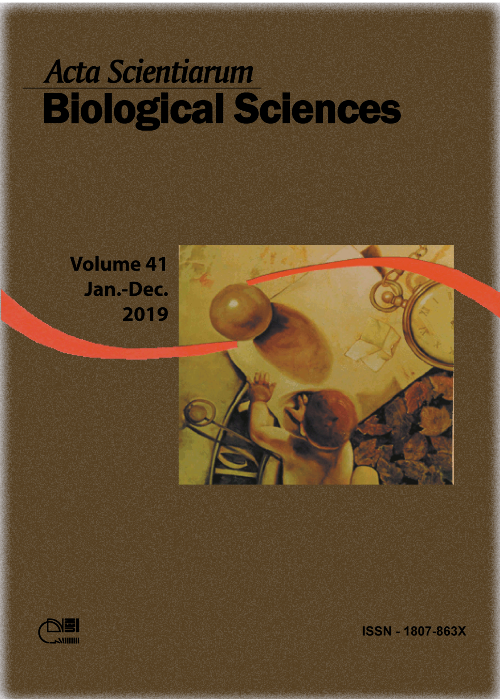Impact assessment of an effluent discharge on benthic macroinvertebrates in a subtropical river using indexes
Abstract
Benthic macroinvertebrates are used as environmental bioindicators in the assessment of water quality in rivers and lakes, due to the sensitivity of some taxa to pollution. The objective of this research was to evaluate the consequences of industrial effluent discharge on the structure of the benthic community present in a river in the subtropical region of Brazil. The organisms were collected at three points of the Coutinho River, in 2013 (September and November) and 2014 (January and March). To characterize the community were calculated density, Shannon diversity index (H´), Pielou equitability (J), taxa richness, Biotic Indices (Biological Monitoring Working Party - BMWP, Average Score Per Taxon - BMWP-ASPT, Family Biotic Index – FBI) and Canonical Correspondence Analysis (CCA) between sampling points and biotic and abiotic variables. Fifteen taxa were identified and among the collected organisms, the family Chironomidae was the most representative, followed by Oligochaeta, Hirudinea, Bivalvia, Gastropoda. According to the results of the biological indices, point 1 indicated moderate pollution and the following points (2 and 3) showed severe pollution. These indices showed poor waters with a high degree of pollution. The results were efficient in detecting the environmental impacts suffered by the river and suggest the necessity of a continuous monitoring of the same.
Downloads
DECLARATION OF ORIGINALITY AND COPYRIGHTS
I Declare that current article is original and has not been submitted for publication, in part or in whole, to any other national or international journal.
The copyrights belong exclusively to the authors. Published content is licensed under Creative Commons Attribution 4.0 (CC BY 4.0) guidelines, which allows sharing (copy and distribution of the material in any medium or format) and adaptation (remix, transform, and build upon the material) for any purpose, even commercially, under the terms of attribution.
Read this link for further information on how to use CC BY 4.0 properly.












1.png)




3.png)













